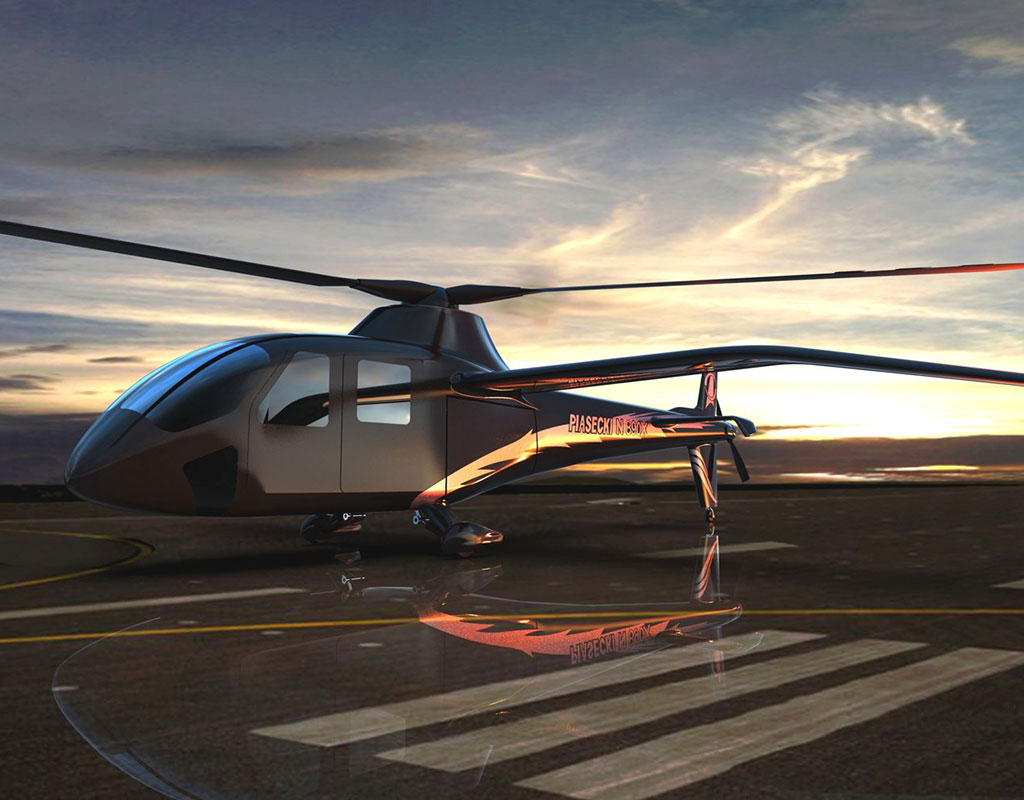
While much of the discussion surrounding hydrogen-electric powered aviation has been centered on fixed-wing aircraft, particularly regional airline turboprops, work is underway to enable hydrogen-electric systems to power traditional rotorcraft, as well as new-design eVTOL vehicles.
ZeroAvia, the U.S./U.K. firm developing hydrogen-electric powertrains for fixed-wing aircraft, is also committed to producing a hydrogen-electric propulsion system to power traditional rotorcraft designs, as well as emerging eVTOLs, by 2027.
The company made news recently when striking a deal with Sweden’s Braathens Regional Airlines to explore the potential of flying hydrogen-electric powered short-haul passenger flights with ZeroAvia’s ZA600 powertrain, which is designed for a nine to 19-seat fixed-wing aircraft and is targeted for a 2025 launch.
According to Alex Ivanenko, ZeroAvia’s general manager for rotorcraft and new segments, the company is aiming to launch the ZA600b powertrain by 2027, which will be designed for an eVTOL/rotorcraft.
“We’re going to develop different systems for different types of aircraft,” he recently told the Vertical Flight Society (VFS) H2-Aero Symposium in Long Beach, California.
An early aircraft to be powered by a hydrogen-electric system “could be a helicopter,” he said. “This could be an aircraft that will land on existing [rotorcraft] infrastructure.”
Indeed, a traditional helicopter design with a hydrogen-electric power system — either retrofitted or as part of a new-build — could come before a new-design tiltrotor aircraft is powered by one given the current plans of air taxi eVTOL developers, which, according to Ivanenko, have largely passed the design point where their aircraft can be powered by a hydrogen-electric system.
“For most of the eVTOL developers, the way the airframe is designed doesn’t allow for putting in the hydrogen fuel cell modification,” he explained.
Through its October 2022 acquisition of fuel cell developer HyPoint (for which Ivanenko served as CEO), ZeroAvia is working with Piasecki Aircraft Corp. to develop a hydrogen-electric system to power the underdevelopment PA-890. Piasecki is using what it describes as a “conventional rotorcraft architecture” for the aircraft, which is being designed to be all-electric with no traditional fuel needed.
The companies are working together on developing a 650-kilowatt hydrogen fuel cell system and will collaborate on ground testing and flight testing.
Joe Rainville, a hydrogen propulsion analyst at Bell, told the VFS conference that a hydrogen-electric-powered helicopter is viable and would provide advantages over either a battery-powered electric rotorcraft or a helicopter powered by traditional fuel.
Hydrogen-electric powertrains would have two to three times higher endurance than a battery-electric engine, Rainville said. Hydrogen “fuel cells are predicted to have a significantly longer service life than batteries or potentially a gas turbine,” he added, noting that “fuel cells are quiet and smooth” and generate power that leads to only water vapor and oxygen-depleted air being emitted.
There are challenges, he cautioned. “Fuel cells make about as much heat as they do power,” he noted, adding that a fuel cell driven system is “more complex than a pure battery-electric system.”
An aircraft fueled by hydrogen will need to store its onboard hydrogen supply in liquid rather than gaseous form, Ivanenko said. So, expensive cryogenic equipment will be needed on the aircraft and “networks” for delivering liquid hydrogen need to be built, he added.
The “infrastructure is more costly” for moving liquid hydrogen than the infrastructure used to deliver petroleum, Ivanenko said, noting a wide swath of players will have to come together to make hydrogen-electric powered flights viable on a large scale.
“There are, across several entities, people who have to come together and actually jointly develop a model for a better future,” he explained. “We cannot solve this equation alone. It is a collaboration of so many entities … A hydrogen powertrain-powered [aircraft] is not so much a supply problem as it is a human coordination problem.”

